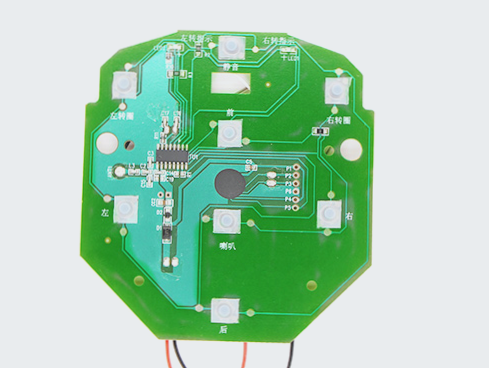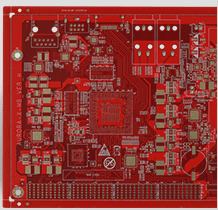Understanding Cables in Electronics
A cable, also known as a Flexible Printed Circuit (FPC), is a vital component used for data transmission in active areas of electronic devices. These cables adhere to industry standards for wiring patterns, line sequences, colors, and numbering conventions. They are commonly referred to as “flat cables” when connecting devices or components.
FPC Cable Overview
Flexible Printed Circuits (FPCs) are specialized cables crucial for applications requiring flexibility, lightness, and compactness. FPC cables consist of copper circuits or printed polymer thick-film circuits etched onto a polymer substrate, allowing them to conform to the shape of the device they are installed in.
Key Features of Cables
- Compact and Lightweight: Cables, especially FPC cables, are known for their small size and light weight, making them ideal for miniaturized and portable electronics.
- Flexibility: FPC cables offer exceptional flexibility, crucial for devices with motion or precise component alignment requirements.
- Cost-Efficiency: FFC cables provide a more affordable alternative to traditional FPCs, leading to increased adoption rates.
- Durability: Despite being lightweight and flexible, FPC cables are designed to withstand wear and tear in moving parts, ensuring long-lasting performance.
FFC vs. FPC Cables: A Comparison
When designing compact and complex devices, the choice between flexible flat cables (FFC) and flexible printed circuits (FPC) is crucial. These cables can significantly reduce weight and volume, with the potential to enhance mechanical stability using reinforced materials or liners.
Flexibility and Durability
FFC and FPC cables offer remarkable flexibility, allowing them to bend, twist, or move without damage, making them suitable for dynamic applications. These cables can withstand millions of flex cycles, making them ideal for products requiring continuous movement.

Benefits of FFC and FPC Cables in PCB Applications
Traditional PCB solder joints often fail under thermal and mechanical stress, while FFC and FPC cables excel in maintaining signal integrity and reliability even after numerous flex cycles. EECX’s Product Manager, Jenny, highlights the advantages of using flat cables in products with smaller form factors, emphasizing their effectiveness in transferring electrical signals and power during motion.
Superior Electrical and Thermal Performance
FFC and FPC cables offer outstanding electrical properties, such as low dielectric constants for fast signal transmission. Their superior thermal performance prevents component overheating, with a higher glass transition temperature ensuring functionality at elevated temperatures. LT Electronics’ CEO praises these cables for their thermal and electrical benefits, especially in environments where temperature control and signal integrity are crucial.
Improved Assembly Reliability and Quality
FFC and FPC cables enhance assembly reliability and quality by simplifying interconnections and reducing the need for additional hardware components like solder joints and relay lines. This streamlines the manufacturing process, increasing efficiency and reducing misalignments during assembly. EECX’s Marketing Manager, Ping Wu, emphasizes the cables’ low rigidity and small size, which minimize human errors and simplify the assembly process.
FFC Cable: Definition and Applications
Flexible Flat Cables (FFC) provide a compact and efficient solution for connecting electronic components, with customizable wire count and spacing ideal for space-limited applications. These cables are commonly used in data transmission between PCB boards in miniaturized electronic devices and are available in various pitch sizes for versatility in applications.
FPC Cable: Definition and Applications
Flexible Printed Circuit (FPC) cables offer higher flexibility than FFCs and can be bent without losing functionality. They are used in various applications like FPC antennas and touch screens, providing reliable interconnections in modern electronic devices with their combination of flexibility and durability.
Key Differences Between FFC and FPC Cables
- Manufacturing Process:
- FPC: Made from flexible copper-clad foil (FCCL) through chemical etching to create flexible circuit boards with different layouts.
- FFC: Consists of flat copper foil between insulating layers, resulting in a simpler design compared to FPCs.
- Cost: FFC cables are more cost-effective due to their simpler construction, making them popular for cost-sensitive designs without compromising performance.
FFC vs FPC Cables: A Comparison
When it comes to flexible flat cables (FFC) and flexible printed circuit (FPC) cables, both options have their own unique strengths that cater to different needs.
- Flexibility: FPC cables excel in highly intricate, multi-layered applications that demand extreme flexibility.
- Durability: FFC cables are known for their durability and reliability, making them a cost-effective choice for simpler interconnections.
- Performance: Understanding the distinct performance characteristics of FFC and FPC cables is crucial for engineers to select the right fit for their specific design requirements.
By comprehending the nuances between FFC and FPC cables, engineers can confidently choose the ideal cable type that aligns with the intricacies of their projects.



